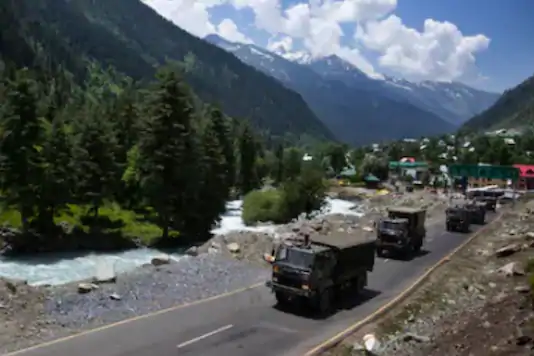
SOURCE: NEWS18
The Indian Army has significantly strengthened its presence on a number of “strategic heights” and enhanced deployment of troops and weapons at key points around the Pangong lake in eastern Ladakh following an unsuccessful attempt by the Chinese PLA to unilaterally change the status quo in the area, authoritative sources said on Monday. The Army has also further bolstered overall surveillance mechanisms in all areas along the Line of Actual Control (LAC) in eastern Ladakh after foiling China’s fresh attempt to occupy an area on the southern bank of Pangong lake, they said.
Earlier in the day, Army Spokesperson Col Aman Anand said the Chinese military carried out “provocative military movements” to “unilaterally” change the status quo on the southern bank of Pangong lake on the intervening night of August 29 and 30 but the attempt was thwarted by the Indian troops.
Top military and security brass has already reviewed the entire situation in eastern Ladakh. Separately, Chief of Army Staff Gen MM Naravane held a meeting with top military officials over the fresh confrontation, the sources said.
“The Army has occupied strategic heights and strengthened deployment of troops and weapons in all key points on the southern bank of the Pangong lake area,” said a source, adding the fresh deployment will provide India greater advantage in the region. India has also deployed troops from special operations battalions in the area, it said.
The sources said a sizeable number of Chinese troops were moving towards the southern bank of Pangong lake in an attempt to occupy the area but the Indian Army quickly made a significant deployment to foil the attempt. They said the Indian Air Force (IAF) has also been told to enhance its surveillance on increasing Chinese air activities along the LAC in eastern Ladakh. There have been reports that China has deployed J-20 long-range fighter jets and several other key assets in strategically located Hotan airbase which is around 310 kms from eastern Ladakh.
In the last three months, the IAF deployed almost all its frontline fighter jets like Sukhoi 30 MKI, Jaguar and Mirage 2000 aircraft in the key frontier air bases in eastern Ladakh and elsewhere along the LAC. The IAF carried out night time combat air patrols over the eastern Ladakh region in an apparent message to China that it was ready to deal with any eventualities in the mountainous region.
The IAF has also deployed Apache attack choppers as well as Chinook heavy-lift helicopters to transport troops to various forward locations in eastern Ladakh. The fresh attempt by China to change the status quo in the Pangong lake area is the first major incident in the area after the Galwan Valley clashes on June 15 in which 20 Indian Army personnel were killed. China also suffered casualties but is yet to make the details public. According to an American intelligence report, it was 35.
India and China have held several rounds of military and diplomatic talks in the last two-and-half months but no significant headway has been made for a resolution to the border row in eastern Ladakh. The two sides began a process of disengagement on July 6, a day after a telephonic conversation between National Security Advisor Ajit Doval and Chinese Foreign Minister Wang Yi on ways to bring down tensions in eastern Ladakh. However, the process has not moved forward since mid-July.
The PLA has pulled back from Galwan Valley and certain other friction points but the withdrawal of troops has not moved forward in Pangong Tso, Depsang and a couple of other areas. At the five rounds of Corps commander-level talks, the Indian side has been insisting on complete disengagement of Chinese troops at the earliest, and immediate restoration of status quo ante in all areas of eastern Ladakh prior to April.
The face-off began on May 5 following violent clashes between the two armies in the Pangong lake area. The incident in Pangong Tso was followed by a similar incident in North Sikkim on May 9. The India-China border dispute covers the 3,488-km-long Line of Actual Control).






